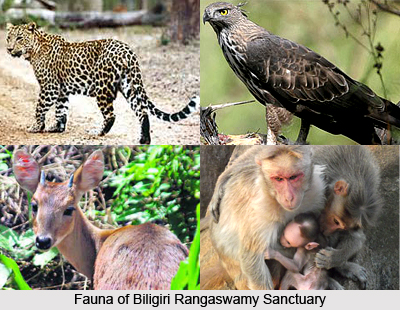Biligiri Rangaswamy Temple Wildlife Sanctuary has been named after the Biligiri Ranagana Hills which is situated between Kapila and Kaveri Rivers, along the borders of Karnataka and Tamil Nadu, particularly in Yelandur and Kollegal talukas in Chamarajanagar District, Karnataka. The sanctuary is located at a distance of nearly 90 kms away from Mysore and 28 kms away from Yelandur. It is a protected region which was established under the Wildlife Protection Act of 1972.The Biligiri Rangaswamy Temple Wildlife Sanctuary is based at an altitude of nearly 5, 091 feet above mean sea level. On 27th June, 1974, this sanctuary was created close to the Biligiri Rangaswamy Temple and its total area was extended to about 539.58 square kilometres on 14th January, 1987.
Flora of Biligiri Rangaswamy Wildlife Sanctuary
Biligiri Rangaswamy Temple Sanctuary possesses five main types of vegetation comprising 6.5 percent of Evergreen Forests, 61.1 percent Dry Deciduous Forests, 28.2 percent Scrub, 3.8 percent Savanna grasslands and 0.8 percent Shola Forests.
 Visitors will take note of the unique nature of this sanctuary as it is home to so many varieties of forests apart from Semi-Evergreen Forests. Several types of plants with medicinal properties are also found here.
Visitors will take note of the unique nature of this sanctuary as it is home to so many varieties of forests apart from Semi-Evergreen Forests. Several types of plants with medicinal properties are also found here.
Fauna of Biligiri Rangaswamy Temple Sanctuary
The regional fauna of this Indian sanctuary includes about 245 species of birds, 22 species of reptiles , 36 mammals, 145 butterflies and 776 species of higher plants. Tigers, Sambhar, Chital, Panther, Gaur, Elephant, Bear and other animals are all existent in the sanctuary.
Tourists visiting this sanctuary can enjoy recreational activities like amateur fishing, coracle boat rides, outdoor camping, river rafting, trekking, bird watching and professional angling. The perfect time to visit this sanctuary is between the months of October and May.
This article is a stub. You can enrich by adding more information to it. Send your Write Up to content@indianetzone.com











